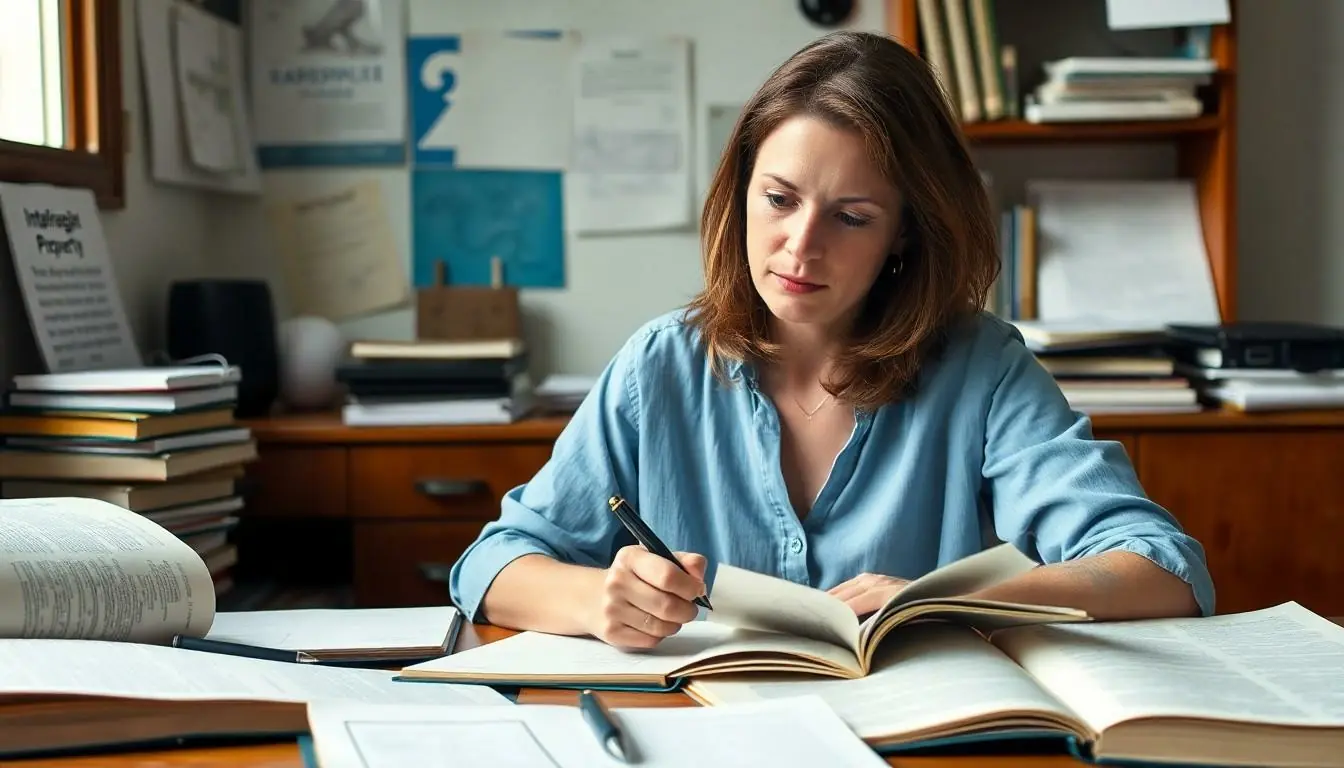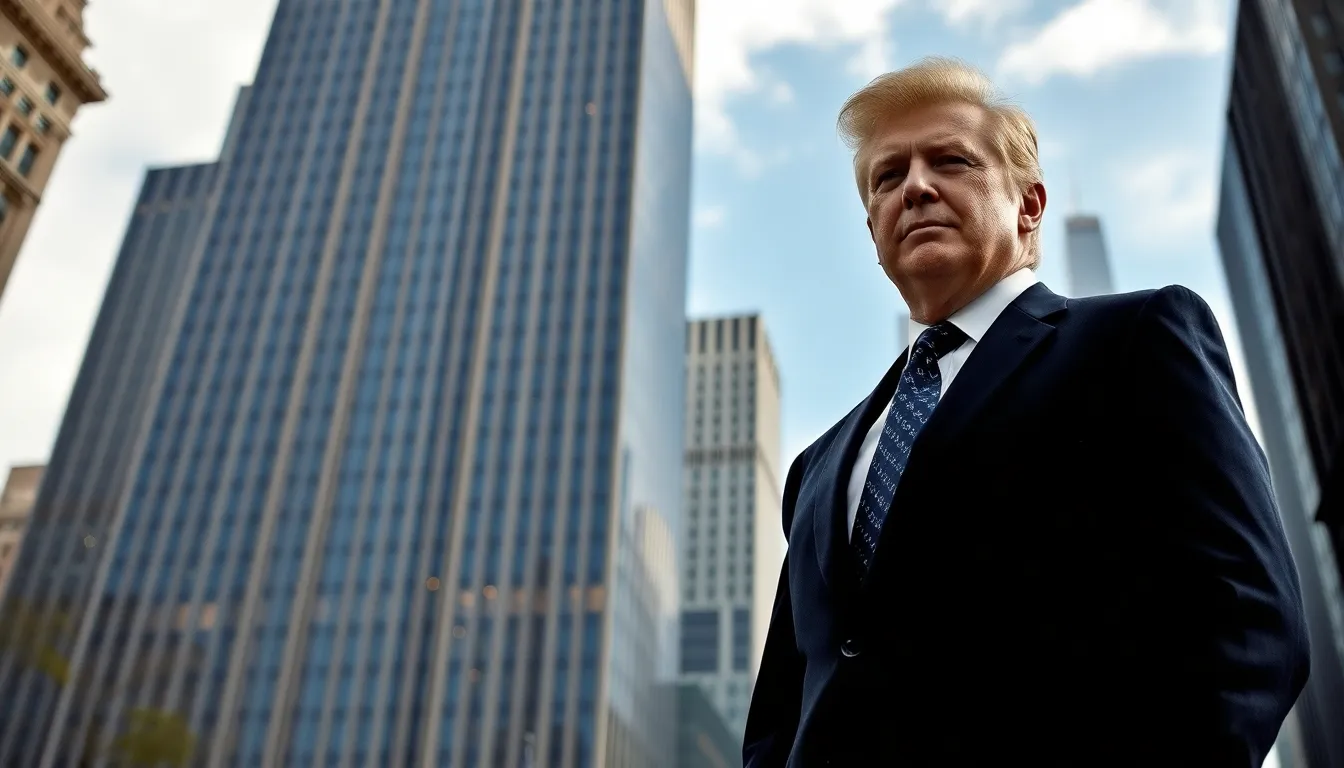In a world where ideas are currency, the thought of a chatbot swiping your genius can feel like a scene straight out of a sci-fi thriller. Enter ChatGPT, the AI that’s got everyone buzzing. But can it really snag your brilliant concepts while you’re busy sipping coffee and brainstorming?
Table of Contents
ToggleUnderstanding ChatGPT
ChatGPT serves as an advanced AI chatbot designed to assist users with various tasks. Concerns arise about its potential to imitate or appropriate original ideas shared during interactions.
What Is ChatGPT?
ChatGPT is a product of OpenAI, utilizing a sophisticated architecture based on the Generative Pre-trained Transformer model. Users engage with it for tasks ranging from generating text to answering queries. This AI tool processes vast datasets, deriving information and patterns from their content. Its ability to produce coherent and contextually relevant responses makes it a popular choice among users seeking efficient problem-solving solutions.
How Does ChatGPT Function?
ChatGPT employs a neural network trained on extensive textual data. Each interaction involves understanding user input and generating suitable replies. By predicting the next word in a sentence, it creates meaningful dialogue. The system continually learns from new data, adapting to various language styles and contexts. Feedback from users helps refine its responses, enhancing performance over time. This dynamic approach allows ChatGPT to provide increasingly relevant and engaging interactions for users.
The Concept of Idea Theft

Concerns about idea theft in the context of AI technologies like ChatGPT continue to grow. Understanding the nuances surrounding this issue is crucial for innovators and creators.
Defining Idea Theft
Idea theft refers to the unauthorized use or appropriation of someone else’s creative concepts. It can occur when individuals exploit another’s original thoughts, leading to potential legal repercussions. Copyright laws offer some protection against this, but they often focus on the expression of ideas rather than the ideas themselves. Examples include using a creator’s unique plotlines or product designs without permission. Legal definitions vary by jurisdiction, making it essential for creators to familiarize themselves with applicable laws. Keeping track of one’s creative work and maintaining documentation may help in asserting ownership if necessary.
Common Misconceptions About Intellectual Property
Many individuals misunderstand intellectual property or IP rights. One common misconception is that all ideas are automatically protected by copyright, which isn’t true. Copyright specifically protects fixed expressions, not abstract ideas. Another misconception suggests that sharing ideas in a public forum leads to guaranteed ownership. In actuality, sharing ideas without proper documentation can result in difficulties asserting rights later. Legal protections do exist for distinct types of IP, such as trademarks and patents, which vary in their scope and duration. Educating oneself on these distinctions promotes better understanding and safeguards for creative works.
Can ChatGPT Steal Your Ideas?
Concerns exist about ChatGPT’s ability to appropriate original concepts. Many wonder if this AI can actually infringe on creative ownership.
The Mechanism of Question Responses
ChatGPT generates responses based on a large dataset of text, using predictive algorithms to formulate sentences. It doesn’t retain user data or conversations, meaning specific ideas shared aren’t stored or reused. Each interaction remains independent, preventing unauthorized utilization of disclosed content. This architecture limits the risk of idea theft.
Analyzing User Interactions
Interaction analysis occurs in real-time, with ChatGPT processing queries to improve responses. Feedback helps enhance understanding, though it does not capture individual user ideas for later use. Data collection focuses on improving AI performance rather than appropriating creative thoughts. Users maintain control over their intellectual property by keeping shared ideas confidential.
Protecting Your Ideas
Effective strategies exist for safeguarding creative concepts in an age of advanced AI like ChatGPT. Individuals can take specific precautions to protect their intellectual property.
Best Practices for Idea Protection
Securing ideas begins with thorough documentation. Keeping records of brainstorming sessions, drafts, and communications establishes a timeline of development. Use non-disclosure agreements (NDAs) when sharing ideas with others. Educating oneself on intellectual property rights enhances understanding of legal protections. Collaborating with trusted individuals helps ensure that ideas stay secure. Prioritizing confidentiality during discussions minimizes the risk of unauthorized use. Sharing insights carefully and selectively fosters a protective environment for creative works.
Legal Considerations
Understanding copyright laws is crucial for protecting creative work. While copyright protects the expression of ideas, it does not safeguard the ideas themselves. Registering works with the U.S. Copyright Office strengthens legal claims. Seeking trademark registration for unique logos or phrases offers additional protection. Exploring patents for inventions provides exclusive rights to creators. Consulting legal professionals specializing in intellectual property clarifies the complexities of this area. Remaining vigilant about potential infringements helps maintain ownership and control over original content.
The concerns surrounding ChatGPT and idea theft are valid but often overstated. Users can rest assured that their unique concepts remain protected during interactions with the AI. By understanding the nuances of intellectual property and implementing effective strategies for safeguarding creative works, individuals can confidently engage with AI technologies. Maintaining confidentiality and proper documentation is crucial in asserting ownership. With the right precautions in place, users can leverage the benefits of AI while minimizing risks to their innovative ideas. Embracing this technology can enhance creativity without compromising one’s intellectual property rights.




